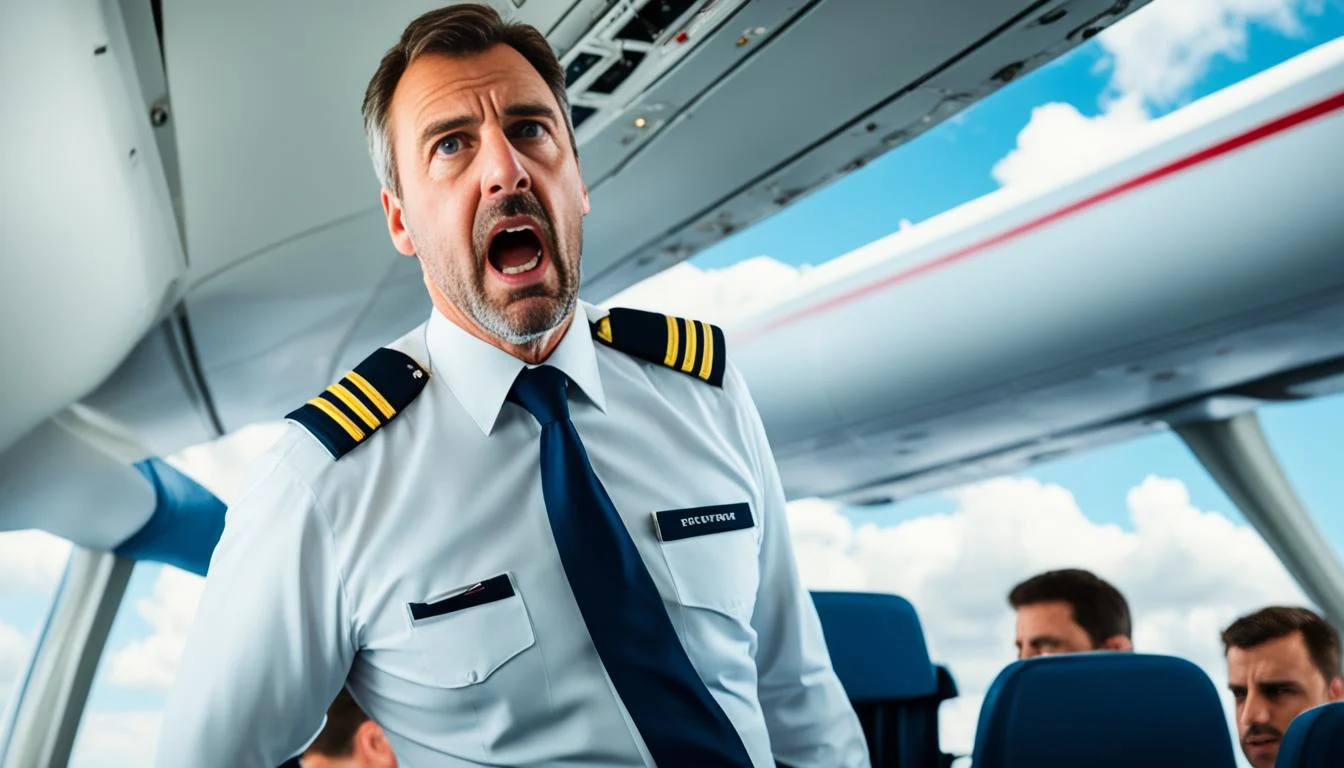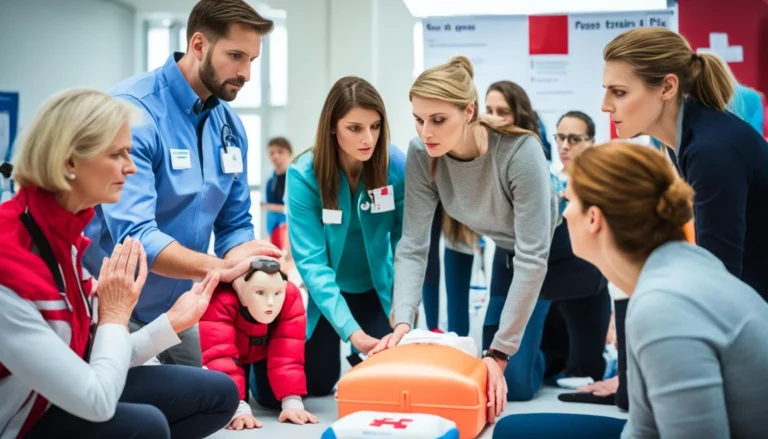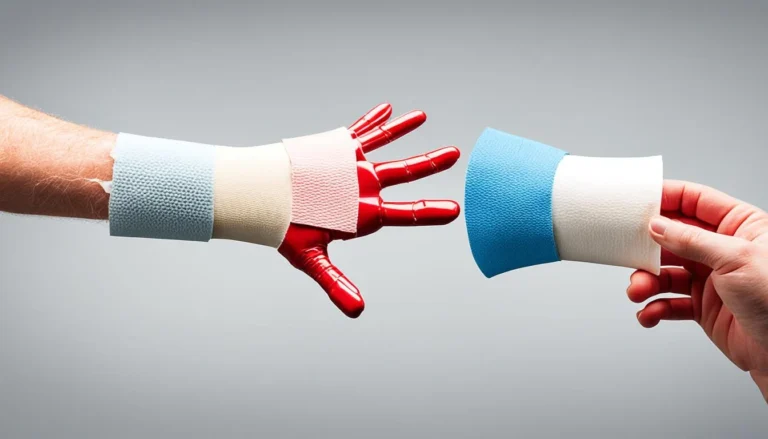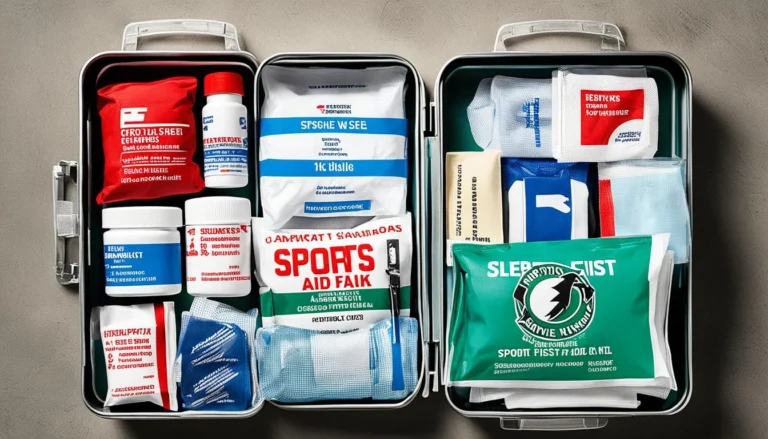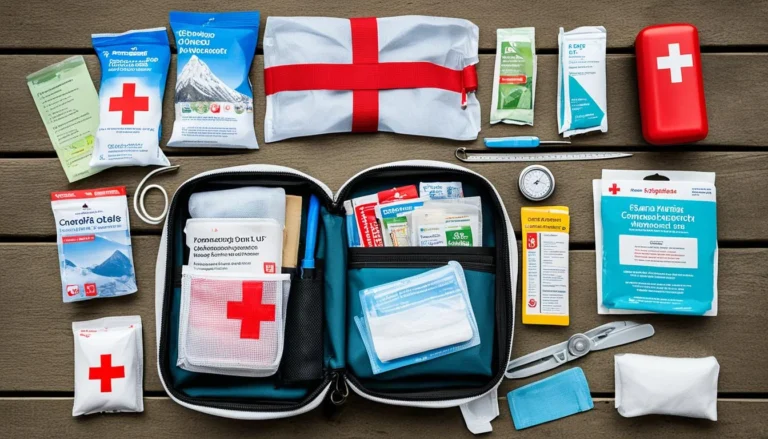Do Airplanes Have First Aid Kits?
When you fly, looking after passenger health is key. That’s why planes carry first aid kits. These kits help manage health issues in the air and follow strict rules. Inside, you’ll find things like gauze pads, small scissors for bandages, and pain medicine.
You can also bring some health items with you. But, there’s a limit on liquids, gels, and creams. They must be 100 ml or less and fit in a quart bag.
If you need special medical things, like glucose gels or an epinephrine pen, you must tell security. The U.S. TSA gives clear rules on this. They aim to keep flights safe while meeting health needs.
Key Takeaways
- First aid kits on airplanes are standard provisions for handling medical emergencies.
- Travelers can carry specific first aid items like gauze pads and pain relievers onboard.
- Liquids and gels must be limited to 100 ml and placed in a quart-sized resealable bag.
- Essential medical supplies must be declared and approved by security.
- The TSA provides detailed guidelines for carrying medical items on flights.
Overview of Airline First Aid Kits
Airlines work hard to keep us safe while we fly. They pack every flight with a fully loaded first aid kit. These kits are ready for any medical issues, making sure they meet all rules and safety standards.
Contents of a Typical First Aid Kit
First aid kits on planes have everything needed for common health problems during flights. You can expect to find:
- Bandages and adhesive strips
- Splints for immobilising fractures
- Antihistamines for allergic reactions
- Aspirin for pain relief and cardiovascular incidents
- Advanced diagnostics, such as blood pressure cuffs and pulse oximeters on some flights
Regulations and Standards
The FAA makes sure airline first aid kits are up to scratch. They have strict guidelines that cover many medical situations. With advice from the Aerospace Medical Association, these rules aim to handle lots of different health issues. The main goal is to be ready for breathing, heart, and brain emergencies.
Putting these medical items on a plane is more than just following the law. It shows airlines care about our well-being. This makes flying not only safer but also more comforting for everyone.
What to Expect in an Emergency Medical Kit
Flight safety is high, but it’s wise to prepare for medical needs. Knowing what’s in an aeroplane’s emergency kit can calm your nerves. It provides a sense of security for your trip.
Essential Supplies Included
The start of in-flight medical help is a packed emergency kit. It usually has:
- Blood pressure monitors
- Oral pain relievers
- Antihistamines
- Epinephrine
- Bronchodilator inhalers
This gear is ready for quick action in many mid-air health crises. It deals with everything from allergies to breathing issues right away.
Enhanced Medical Kits
Planes also carry bigger emergency medical kits to handle more health problems.
AEDs for heart conditions are standard. They boost survival odds in life-threatening moments. Some airlines even include:
- EpiPens
- Anti-nausea medications
- Remedies for stomach, brain, lung, skin issues
These advanced steps show how much airlines care about passenger wellbeing. It’s about making sure everyone is safe from take-off to landing.
Flight Attendant Training and Protocols
Flight attendants receive detailed training in handling medical emergencies. They learn many essential skills in flight attendant medical training. This makes sure they can help quickly and effectively when needed onboard.
CPR and AED Training
They get a lot of training in CPR and using AEDs. These skills are crucial in helping during heart emergencies. Being good at CPR and AED use can save lives. It helps flight attendants provide top-notch in-flight passenger care.
Consultation with Medical Professionals
Flight attendants also have ways to get advice from medical experts. They can talk to doctors on the plane or use medical advisory services with special phones. These experts help decide the best care for passengers and if an emergency landing is needed. This means passengers get the right medical help quickly.
Special Considerations for Travellers
Keep health in mind before and during flights to stay safe. If you have health issues or just had surgery, be extra careful. Changes in cabin pressure can make things worse. This includes problems like angina or issues after surgery. Knowing health tips for travel is key for a smooth trip.
Useful steps can keep you well while flying. A key tip is to drink plenty of water. Alcohol and caffeine should be avoided to help stay hydrated. Also, try to walk around on long flights. This lowers the risk of blood clots.
Always have your important medicines with you. Don’t put them in checked luggage. This little step could be a big help in an emergency. Following these tips will help make your flight better and safer for all.

